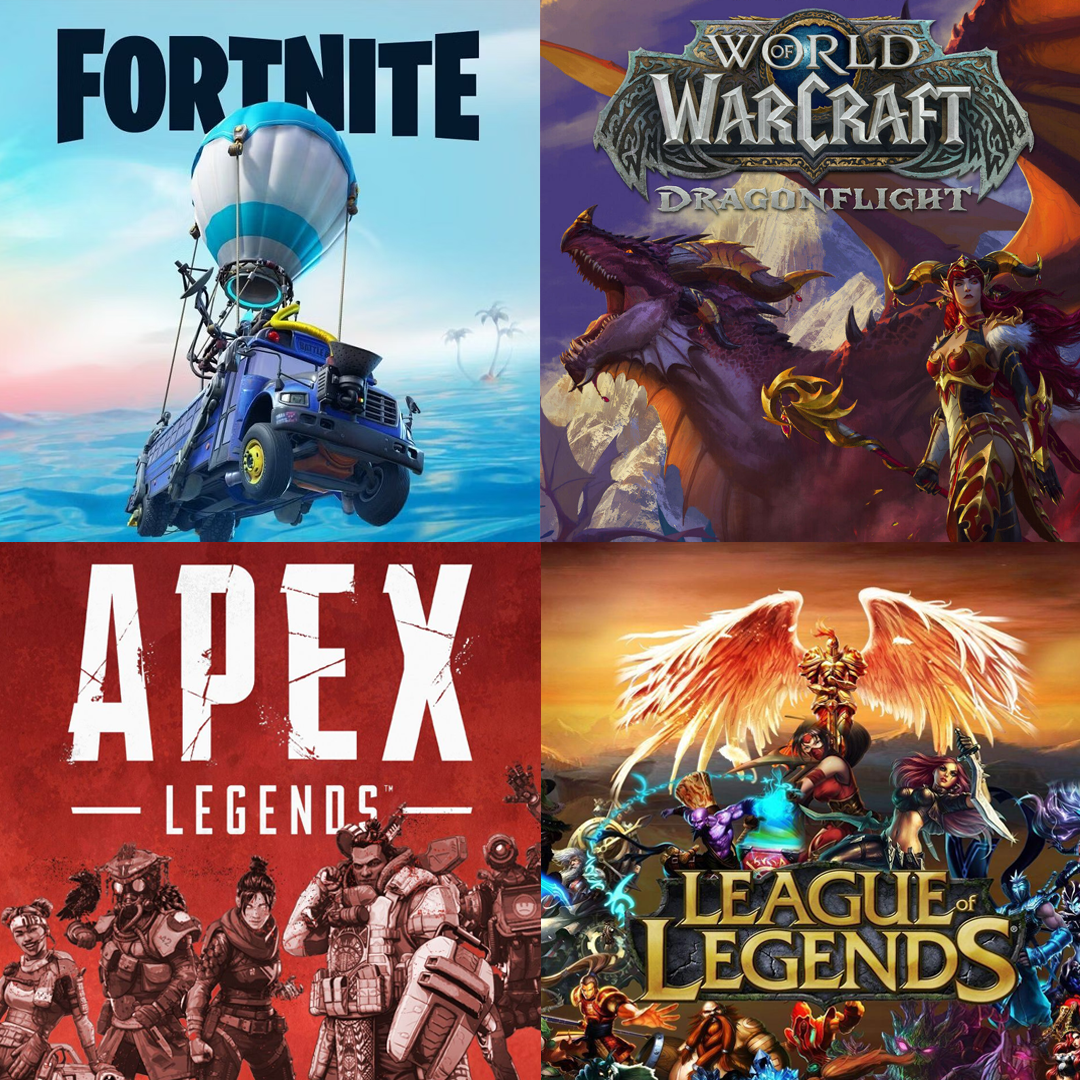The video game industry: between galloping growth and constant evolution

Article author :
Even if you only occasionally cast an eye over video game news, there is no way you could have missed it. ‘It’ is the avalanche of major video game titles which has been battering all of the platforms for a few months now. A genuine tidal wave which confirms the extremely positive global trend for this (still) new industry.
‘God of War Ragnarok,’ ‘World of Warcraft Dragon Flight,’ ‘Pokémon Violet & Scarlet,’ and ‘The Callisto Protocol.’ These titles, feverishly awaited by tens of millions of gamers, were all released within just a couple of months of each other at the end of 2022. If you are a gamer like me, you quite simply don’t know where to begin.
And yet, these triple A products (in other words, the blockbusters of the video game world) are only a minuscule proportion of the flood of games released in 2022. A wave of several thousand video game products which is destined to be repeated, doubtless with even greater ferocity, in the upcoming year.
An industry unaffected by the crisis
All this means that the video game industry is doing well. One might even say it is in great shape. Unlike numerous other sectors which are struggling, first and foremost being the cinema industry, video game products are selling well and the sector’s growth is stable to an almost outrageous degree, as it rides out the various crises without ever being weakened.
The proof in a few figures that make your head spin: ‘God of War Ragnarok’ and its 5.1 million copies sold in … one week. A record for the Japanese company, Sony. Nintendo’s ‘Pokémon Violet & Scarlet’ and its 10 million sales in 3 days. In terms of revenue, let’s mention ‘Call of Duty Modern Warfare’ and its 1 billion dollars in 10 days. Staggering.
Especially given that over the past two years the major consoles such as PlayStation 5 and to a lesser extent the Xbox Series S have become harder or even impossible to find in the shops, owing to production shortfalls and a global lack of electronic components.
But the video game industry does not consist solely of big production studios. It is also a myriad of independent developers and small studios of just a handful of people which often offer original, touching and totally innovative creations. A community believed to be doomed given the overwhelming quantity of games released in recent years. Yet this has not been the case, since, in 2022 in any case, this distinctive caste has continued to hold its own.
Another gloomy prediction which failed to materialise concerned the ‘solo’ games, in other words, those played on one’s own, in contrast to multiplayer games. Whilst this latter category continues to attract more and more people eager to share experiences, the opuses whose gameplay is focused on a solitary pleasure continue to do very well. Saying that, the “VG” public has never been as eclectic as it is today.
Iteration a priority trend for the ‘big’ studios
Sequels, remakes, remasters, regular seasons and additional content are the watchwords for the big studios today. And for good reason. Some ten years ago, new licences proliferated and risk-taking was multifold. The studios had no hesitation in investing tens of millions of Euros to develop new games with very ambitious or totally innovative gameplay. But in the wake of several painful and costly setbacks, the industry has adopted new strategies. Whilst innovations continue to appear, they are noticeably more diluted in an ocean of ‘rehashed’ content.
Amongst this content are found the remakes, which today form a particularly conspicuous revenue pool. ‘The last of Us Part 1,’ ‘Resident Evil 4’ and ‘Dead Space’ are of this type. Games which had already been released several years ago and are made over graphically to fit contemporary tastes in a completely new version. The advantage: far lower development costs with very few modifications to make within the title itself. But also a simple opportunity for the studios to bank on a ’brand’ which will attract as many nostalgia buffs eager to relive the feelings they had already experienced in times past as it will newcomers who want to play the game but have been blocked by the outdatedness of the original episode.
The sequels are not about to be outdone in this process. The year 2022 alone witnessed the announcements of the releases of: 5 new ‘Assassin’s Creed,’ 3 ‘Yakuza,’ 4 ‘Silent Hills’ (including a remake) and 3 ‘The Witcher.’ The common feature of these titles is having a vast community which they have been able to generate thanks to their qualities on the release of previous episodes. For it is indeed their name which today unites these communities, much more so than those of the studios which develop them. They are also beneficial in terms of the amount of work to be carried out in order to see them take shape. Because they often follow the vaunted rule of 33%: 33% innovations, 33% improvement of the characteristics existing in the previous opuses and 33% unadulterated recycling of already established mechanisms.
Finally, it is impossible not to mention the ‘games-as-service’, a complete sector within the sector. The concept is simple. You develop a game around which a community forms, you update it regularly, you offer new content in the form of regular ‘seasons’ and you allow the players to buy different types of items directly from within the game. Amongst recent examples are ‘Fortnite,’ ‘Apex,’ ‘League of Legends’ and the inexhaustible ‘World of Warcraft.’ Their concept allows them to keep going for years with the same title without having to offer any sequels and, most importantly, it brings in high returns continuously, as is illustrated by the Electronic Arts studio, 71% of whose annual turnover derives from the microtransactions carried out in its various games of this type.

The transformation of sales platforms
These developments go hand in hand with one of the biggest changes the sector is currently undergoing. Dematerialisation. Gone are the days when you would go to the shop to look for your game, neatly stacked in its bulky and design packaging. Nowadays it is downloaded directly, without having to pass by the shop. The studios are pushing hard to accelerate the transition even more. Why? The reason is simple. A downloaded game is a game which can no longer be resold. You own a digital key, which only works for you. The second-hand market is finished. Another advantage: there are no longer unsold items, synonymous with deadweight loss.
And whilst today the majority of titles are to be found on the major specialised online platforms, namely Steam on PC, the PlayStation Store for PS4 and PS5 and the Nintendo Store for Switch, another type of distribution is emerging, and it draws heavily on on-demand services such as Netflix or Amazon.
These new actors are called Xbox Game Pass and PlayStation Plus, catalogues payable in the form of monthly subscriptions and which give you access to hundreds of games which are free to download. Launched at widely undervalued prices, they aim to attract a maximum of players keen on frenetic consumption so as to subsequently increase their fees gradually. The strategy is simple, but formidably effective.
Positive and negative collateral developments
Finally, it will be noted that the landscape around the video game sector is also changing markedly. The specialised press, for a long time considered a beacon by the players when it came to choosing their next adventure, declined severely over time and the succession of crises eventually struck a mortal blow. Prestigious magazines such as ‘Gameblog’ and ‘Gamekult,’ amongst the last representatives and unanimously respected for their independent editorial line, finally succumbed in 2022 and were bought by media groups which are gradually transforming them into advertising platforms in disguise.
There are also changes on the social level. Women in particular, for a long time ignored or hyper-sexualised in video games, are beginning to have strong and central roles. Whilst there remains resistance within the “VG” community, their ‘in-game’ status is evolving for the better, proof of the ways mindsets are changing. As for the working conditions, they have also improved. The freeing of speech has led to reforms of the codes of the studios’ ethics charters, with the aim of avoiding abuses. Not everything is perfect, but here as well the assessment is pretty positive for this industry, which has more than ever become unmissable.
A story, projects or an idea to share?
Suggest your content on kingkong.
also discover

From Belgium to Japan, the new territories of creative digital creativity

Stereopsia, the key European immersive technologies hub

NUMIX LAB 2024: creating bonds and building the future of digital creativity


